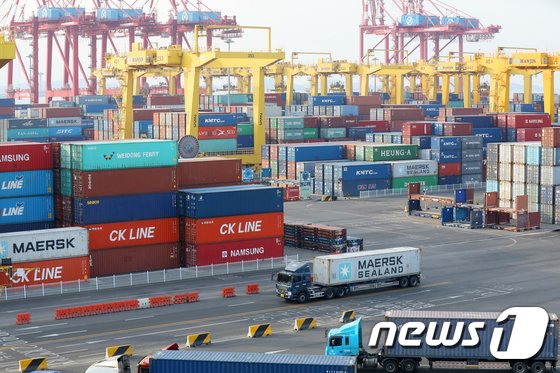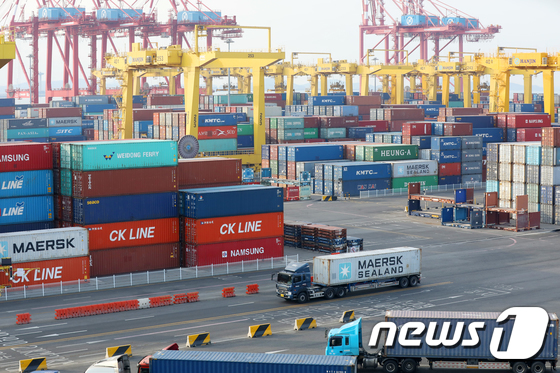 |
| 2021.1.1/News1 © News1 Reporter Min Gyeong-seok |
The current account remained surplus for 7 consecutive months. Even amid the novel coronavirus infection (Corona 19), the current account surplus of $8.97 billion in November, as exports increased, mainly from semiconductors, which is Korea’s flagship industry. Accordingly, the current account surplus from January to November last year already exceeded the annual current account surplus of the previous year (2019). It is also close to reaching the annual current account forecast of $65 billion in 2020.
According to the’International Balance for November 2020 (provisional)’ announced by the Bank of Korea on the 8th, the current account in November recorded a surplus of $8.97 billion. The current account is the sum of all economic transactions such as capital and labor, along with the import and export of goods and services between countries.
In February, prior to the outbreak of Corona 19, the current account surplus of $6.367 billion, but in March, the scale of the surplus was reduced to $5.96 billion. It showed a deficit.
After that, after turning to a surplus of $2.28 billion in May, $6.88 billion in June, $7.45 billion in July, $6.57 billion in August, $10.13 billion in September, and 11.6 billion in October. It continued its surplus march with $10,000 and $8.97 billion in November.
The current account surplus in November was driven by the commodity account. The product balance was $9.54 billion, an increase of $2.15 billion from the same month last year. This is because exports, which constitute the commodity balance, increased compared to the same period last year, while imports decreased.
In general, Korea’s current account is a structure in which the surplus in the product account is eaten by the service account, the main income account, and the transfer income account. The current account is determined by the direction of exports, a key axis of Korea’s economy.
Exports in November were $47 billion, an increase of 1.1% from the same month of the previous year, turning upward in one month. In particular, the average daily export value in November was $2.04 billion, an increase of 3.3% compared to the same month last year, increasing for the second consecutive month. Earlier, the average daily export value in October was $2.24 billion. The main industry, semiconductors, increased 16.4% compared to the same month last year, information and communication devices increased 23.8%, and chemicals increased 10.2%. On the other hand, petroleum products recorded sluggish performance with a sharp decline of 49.1% from the same month last year.
Income fell 4.2% to $37.8 billion, showing a decline for the second consecutive month.
The service balance was in a deficit of $720 million, a decrease of $1.1 billion from the same month last year. Although the travel account had a deficit of $450 million, the deficit decreased by $450 million compared to the same month last year. In addition, the transportation balance recorded a surplus of 400 million dollars, turning to a surplus compared to the same month last year.
The main income balance was $420 million, a decrease of $550 million from the same month last year. This is due to the increase in dividend payments by foreign direct investment corporations.
The transfer income balance recorded a deficit of $280 million.
Amid the Corona 19 crisis, exports, the major axis of Korea’s economy, outperformed the previous year, and the price of raw materials such as crude oil and gas declined. From January to November of last year, the current account alone amounted to 69.4 billion dollars.
“The scale of the current account surplus from January to November of last year has already exceeded $59.97 billion, the annual current account surplus in 2019,” said Lee Seong-ho, head of the Financial Statistics Department. “This is mainly due to the significant improvement.”
Financial account net assets, representing capital inflows and outflows, recorded an increase of $8.95 billion.
For direct investment, foreign investment by Koreans increased by $3.33 billion, and domestic investment by foreigners increased by $1.33 billion.
Securities investment increased by $9.41 billion in domestic foreign investment and $4.32 billion in foreign domestic investment, respectively.
An official from the BOK said, “Overseas stock investment has expanded mainly with other financial institutions, and foreign bond investment has continued to increase, mainly by institutional investors.” The increase was expanded due to improved investment sentiment, and foreign investment in bonds turned to a decrease.”
